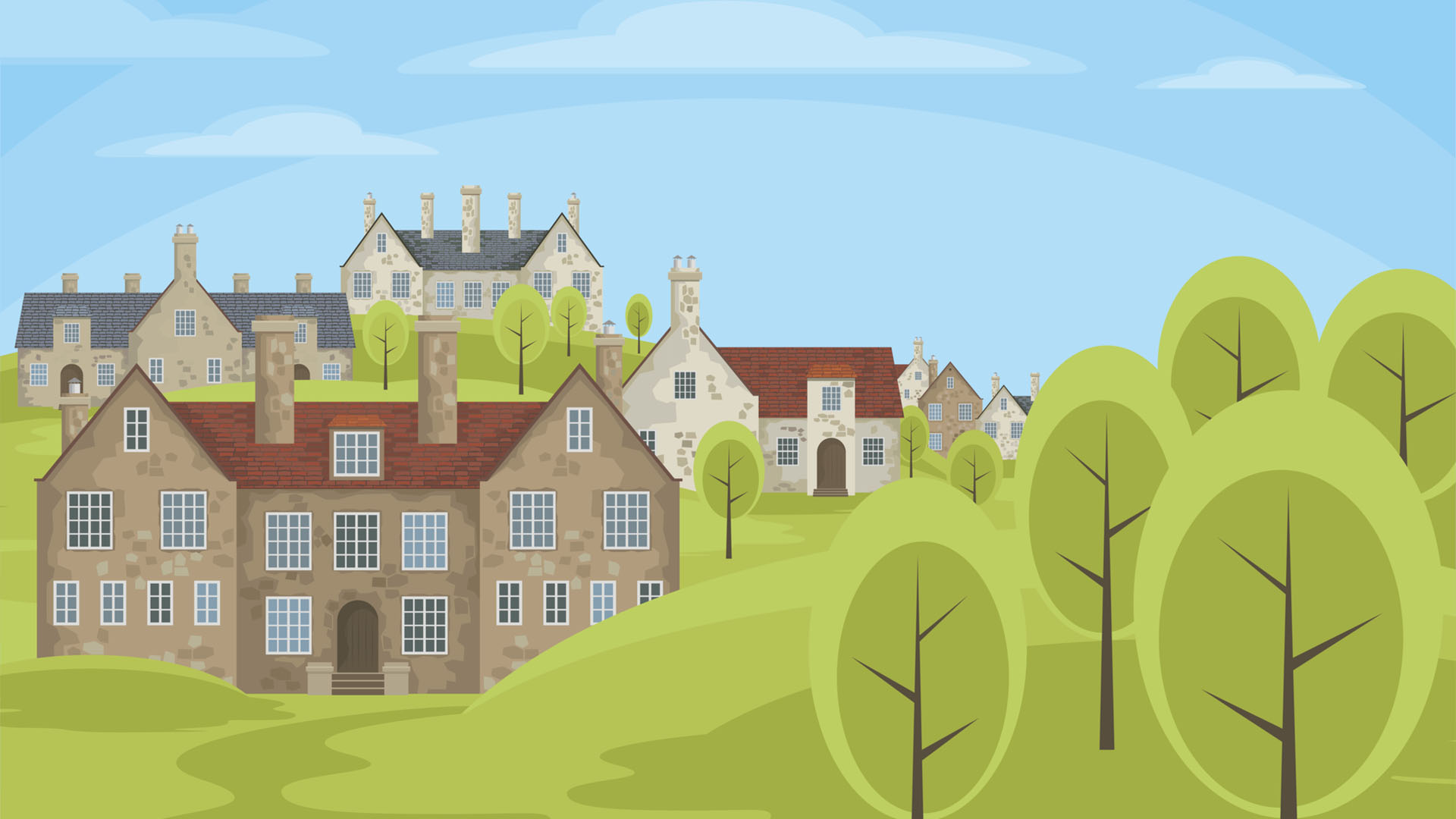National Apprenticeship Week, T-Level Thursday
On T-Level Thursday we look back at the development at North Hertfordshire College in Stevenage. ...
Wide
Standard
Large Tablet
Small Tablet
mobile


Building a home for people in later life not only gives them somewhere safe and appropriate to live, it brings social and economic benefits to the local community where it is sited. However, there is debate over the best place to site these specialist homes. As development of land in rural areas and on the edge of towns is often more straightforward, these locations have often been the sites of choice. Whilst this is fantastic for seniors already living nearby or with family in that area, it is recognised that people first and foremost want to remain in familiar surroundings and for many, this means in a city or town centre setting. Specialist senior living architect, Robin Callister, explores the concept of urban senior living and the myriad benefits these homes bring to residents and locals.
We know that a greater number of people are living longer yet it’s only when we experience this personally, through our own passage of time or by looking after aging parents or grandparents, we start to understand the accommodation options available. We can stay in our own homes for as long as we are physically able before moving into a care home or supported facility, live with relatives, or make the move to a retirement home or village before additional care is needed, knowing that support is on site when it is required. Whatever choice we make, the location of our home is vitally important to us - more than we often realise.
Whilst there is clearly a need for accommodation in rural settings, by locating seniors in the centre of an urban area helps to realise a multitude of benefits for the residents, staff, families and the community. It also brings economic advantages to the area through jobs, economies of scale for local health and care providers and to councils too. This article examines these in more detail and aims to encourage developers not to overlook the possibilities brought by an urban location.
The practicalities of sourcing a site in an urban area
As town and city centre local plans and development policies change and adapt to the socioeconomic pressures of the day, increasing numbers of dedicated senior living facilities are retrospectively incorporated into these plans and, sadly, are rarely met. This is not helped by the huge demand for residential sites in towns and cities. However, a care or extra care facility could be built on an existing brownfield site in the middle of an urban area - a site that may not necessarily be suitable for other developments. This could be because care homes tend to be light on parking provision requirements - so there is less stress on the space available - and fewer residents drive, which mitigates increased demands on highways.
Whilst we have found that local residents are sometimes initially reluctant to the development, this is usually a temporary opinion as they learn that a senior living development is a perfect addition to a neighbourhood with it’s quiet residents, landscaped and maintained gardens, and employment opportunities. The architecture is generally similar to domestic architecture, meaning that the development will complement surrounding buildings too, unlike many commercial buildings. Whilst security could be a greater issue than in a rural setting, careful design will ensure secure ingress and egress points. Overall, seniors are usually fantastic neighbours to have!
Senior Living enriches the fabric of the urban area
Studies show that seniors who stay engaged with others and life around them have higher levels of immunity, tend to sleep better, and live a longer, happier life as friends and loved ones help them deal with life’s daily stresses and often encourage them to live a healthier lifestyle. To encourage engagement, the quality of the environment outside the home is key as it has a strong bearing on whether an older person is inclined to venture outside of their home (Age UK) and interact with others. This is where an urban environment offers huge advantages with its level pavements, places to sit, good street lighting and available public toilets. A study of over-50s found that the unlimited freedom to travel resulted in fewer cases of depression (Journal of Epidemiology and Community Health Erica Reinhard, of the department of global health and social medicine at King’s College London) and with older people less likely to drive, affordable and accessible public transport is crucial.
An urban neighbourhood also brings so many opportunities for social interaction with family and friends for those with both full and limited mobility and cognitive function. This is becoming painfully more evident with the growing polarisation of sections of the community, particularly in our larger cities. Increasingly, a city street’s character is formed less by its vernacular but more by its ethnicity, social class or economic standing – a very difficult cycle to break when you become elderly and have grown up in the same borough your whole life with the same faces around you. Research shows that family play “a large part in the (seniors) lives...in terms of the practical and emotional support that they offer” (Joseph Rowntree Foundation 2007) and the importance of regular interaction with family members cannot be underestimated. If the elder person has family in the area, a centralised location tends to allow and encourage relatives to visit easily on a regular basis, even if they are time poor or without personal transport.
Research has also shown how important engagement with the wider community is to make “life more interesting, stimulating, exciting and engaging.” (Social Well-Being In Extra Care Housing - Joseph Rowntree Foundation 2007) It is reasonable to assume that an urban environment will offer nearby facilities such as libraries, cafes, a post office, leisure facilities and shops that can be easily accessed coupled with the option to share facilities with other community groups. It is more likely that there will be schools, facilities and groups on the doorstep that are willing to engage – with a sense of community bred through historic cultural ties, this bond becomes ever more important. Religious festivals, passages and celebrations should be celebrated community-wide from schools to businesses to care homes and the urban model, propagated by specialist homes allows this. Consider a local school that could encourage pupils to visit residents to sing carols at Christmas or give able-bodied residents the opportunity to go into school to listen to younger pupils reading: it gives older people a sense of purpose whilst helping time-pressured teachers at the same time AND helps to build bonds between inhabitants and local residents.
Whilst working with some previous clients, including The Sisters of Nazareth - a charitable branch of the Catholic Church - and Jewish Care, there is definitely a positive strength for residents that share a common belief or interest and perspective. Sharing an age bracket would rarely be enough to encourage social interaction and avoid isolationism in a senior living setting, especially in a diverse town or city location, but life experiences certainly do. As previously stated, this leads ultimately to healthier mental and physical lifestyles.
Economic benefits for the community
In an ideal world, our cities will deliver opportunities for everyone, no matter their age, to participate in public life and contribute to their communities through paid or voluntary work. Whilst this ideal may not be possible, siting a senior living facility in an urban area does make it more likely. Such a development brings many employment opportunities for locals and could bring possible roles for the residents too. From the initial construction through to supplying and laundering bed sheets. From the employment of medically trained professionals, or chefs or cleaners, so many roles are needed for the home to function. These are often sought-after roles as traditionally lower paid workers live in urban areas and use public transport to get to work. When their employment is literally on the doorstep, it makes the process of work easier and more cost effective.
There are benefits for community care workers too. Local GPs or nursing staff are able to visit multiple patients in a single morning or afternoon as they are housed in one location rather than being spread across multiple settings. The community could even share a site with a GP or medical facility, bringing huge economic advantages to all parties.
Local businesses would benefit from supplying food and supplies to the home and the local economy is boosted by residents who would by necessity shop locally. Consider the recent lockdown, where getting food and medicines to shielding seniors has caused huge difficulties for many families and community groups. Delivering supplies to one home in a central location is far easier than multiple drops spread out across a town or city.
Urban homes are an important part of the senior living mix
I’ve outlined several undeniable benefits of siting a senior living home in an urban environment including social benefits to its residents, opportunities for integration from within the community, the chance to utilise overlooked brownfield sites to add value to the local area, and deliver employment. Urban living opportunities can be overlooked by councils and developers, and even resisted by communities, yet I believe that an urban setting is an important and viable part of the mix for older people, alongside rural retirement villages.
On T-Level Thursday we look back at the development at North Hertfordshire College in Stevenage. ...
On National Apprenticeship Week we celebrate the successes of Jonah Howley, Benjamin Howells and Alberte ...
We wish you peace & prosperity for the year ahead. Enjoy the time off to ...
Saunders are committed to helping young people on their architectural career paths. Over the last ...
Saunders are delighted to be speaking at the Hertfordshire Chamber of Commerce Sustainability Conference on ...
Saunders have built a strong relationship with the University of Hertfordshire, Department of Architecture. Members ...
Saunders have just received Full Planning approval for a substantial landscape led 3 level bespoke ...
A new apartment development designed by Saunders received a resolution to grant planning last night ...
We use cookies to ensure that we give you the best experience on our website. If you continue without changing your settings, we'll assume that you are happy to receive all cookies from this website. If you would like to change your preferences you may do so by following the instructions here.